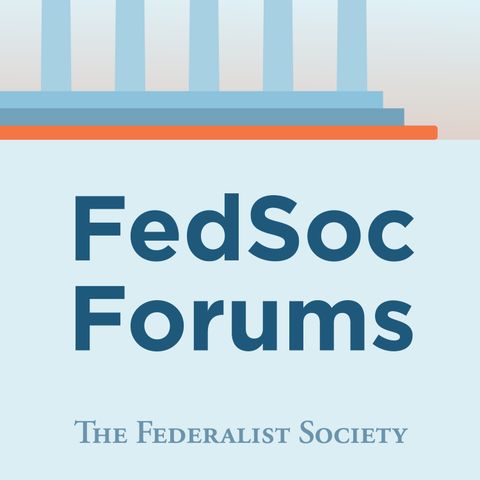The Clean Power Plan: Litigation and Regulatory Challenges, Old and New

Jan 3, 2018 ·
1h 2m 4s
In January 16, 2018, the comment period will close on the Environmental Protection Agency's notice of proposed rulemaking (proposed rule), issued in October 2017, that would repeal the Clean Power...
show more
In January 16, 2018, the comment period will close on the Environmental Protection Agency's notice of proposed rulemaking (proposed rule), issued in October 2017, that would repeal the Clean Power Plan (CPP), an Obama Administration rule that would have regulated greenhouse gas emissions from electric power plants. The Supreme Court has ruled three times since 2007 that EPA has the authority and responsibility to limit greenhouse gas emissions under the Clean Air Act. When the Obama Administration promulgated the CPP in August 2015, EPA viewed it as "confirm[ing] the international leadership of the U.S. in the global effort to address climate change." The CPP was also the subject of high-profile litigation following its issuance. The CPP was famously stayed by the Supreme Court in February 2016, just before Justice Scalia's passing. And litigation challenging the CPP remains pending in the D.C. Circuit, which heard the first and only oral argument in the case sitting en banc (a rare occurrence) in September 2016.
The Trump Administration's proposed rule to repeal the Clean Power Plan disagrees with the Obama Administration's previous interpretation of Clean Air Act section 111(d). The Obama Administration interpreted section 111(d) to allow it to require compliance with overall emissions limits that effectively require changes outside the "fence line" of power plants, including shifting power generation to cleaner sources from sources deemed to be less clean. In the Trump Administration's view, section 111(d) is limited to authorizing EPA to require the best system of emissions reduction (BSER) achievable through technological improvements within individual power plants. The Trump Administration's proposed rule also reassesses the cost of complying with the CPP, which opponents had argued was improperly minimized by the Obama administration. EPA has not yet proposed an alternative rule to replace the CPP, but EPA has stated that it intends to issue an Advance Notice of Proposed Rulemaking in the near future that will solicit information on systems of emission reduction that are in accord with the legal interpretation set forth in EPA's proposed rule to withdraw the CPP.
With the comment period closing shortly, a number of important legal and policy questions are now on the horizon, including these: (1) likely next steps in the still-pending litigation challenging the Clean Power Plan; (2) the administrative law issues and litigation possibilities that are likely to arise when and if EPA proceeds with its proposed repeal of the CPP; and (3) questions about the options that the Administration has for crafting a proposed replacement rule; and (4) questions about the prospects for litigation challenging any such replacement. EPA, industry parties, and non-governmental organizations all have strong and disparate views on the substantive legal and policy paths that EPA should pursue to comply with its statutory obligations and protect the environment, without imposing inappropriate burdens on regulated parties.
Featuring:
-- David Doniger, Director, Climate & Clean Air Program, Natural Resources Defense Council
-- Tom Lorenzen, Partner, Crowell & Moring LLP
show less
The Trump Administration's proposed rule to repeal the Clean Power Plan disagrees with the Obama Administration's previous interpretation of Clean Air Act section 111(d). The Obama Administration interpreted section 111(d) to allow it to require compliance with overall emissions limits that effectively require changes outside the "fence line" of power plants, including shifting power generation to cleaner sources from sources deemed to be less clean. In the Trump Administration's view, section 111(d) is limited to authorizing EPA to require the best system of emissions reduction (BSER) achievable through technological improvements within individual power plants. The Trump Administration's proposed rule also reassesses the cost of complying with the CPP, which opponents had argued was improperly minimized by the Obama administration. EPA has not yet proposed an alternative rule to replace the CPP, but EPA has stated that it intends to issue an Advance Notice of Proposed Rulemaking in the near future that will solicit information on systems of emission reduction that are in accord with the legal interpretation set forth in EPA's proposed rule to withdraw the CPP.
With the comment period closing shortly, a number of important legal and policy questions are now on the horizon, including these: (1) likely next steps in the still-pending litigation challenging the Clean Power Plan; (2) the administrative law issues and litigation possibilities that are likely to arise when and if EPA proceeds with its proposed repeal of the CPP; and (3) questions about the options that the Administration has for crafting a proposed replacement rule; and (4) questions about the prospects for litigation challenging any such replacement. EPA, industry parties, and non-governmental organizations all have strong and disparate views on the substantive legal and policy paths that EPA should pursue to comply with its statutory obligations and protect the environment, without imposing inappropriate burdens on regulated parties.
Featuring:
-- David Doniger, Director, Climate & Clean Air Program, Natural Resources Defense Council
-- Tom Lorenzen, Partner, Crowell & Moring LLP
Information
| Author | The Federalist Society |
| Website | - |
| Tags |
Copyright 2024 - Spreaker Inc. an iHeartMedia Company
